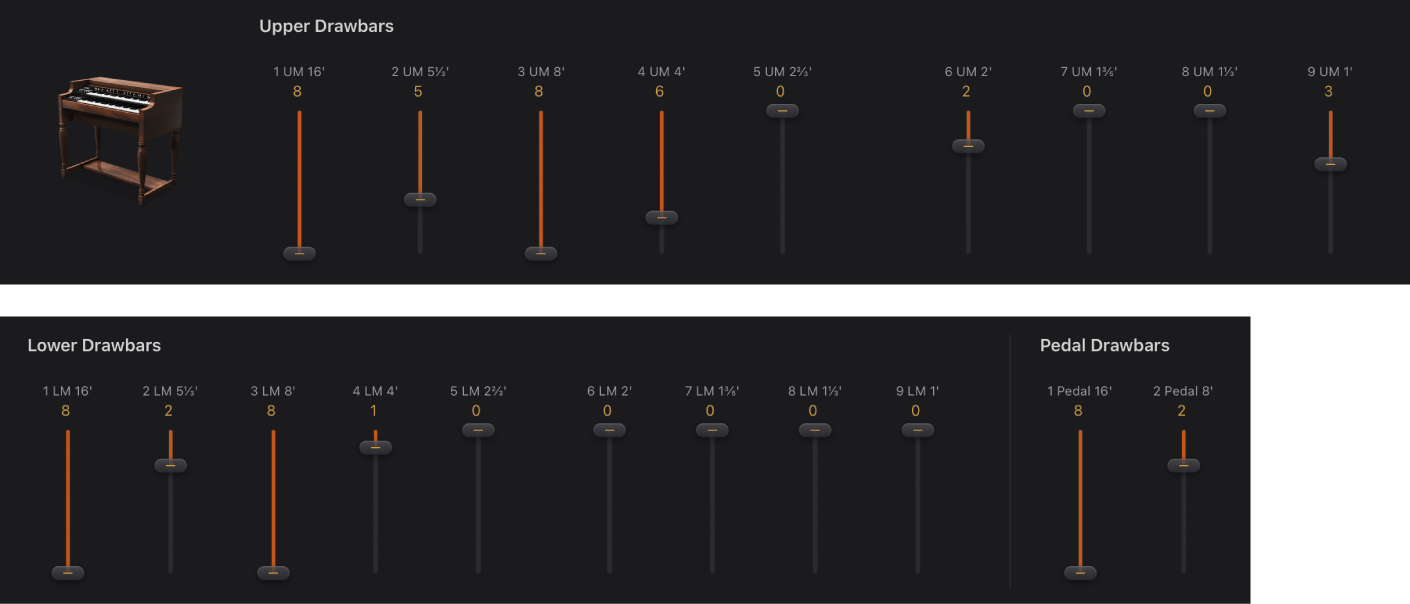Vintage B3 draw bar controls in Logic Pro for iPad

Vintage B3 provides 20 draw bars, nine each for the upper and lower manuals, and two for the pedalboard.
Drag down the draw bars to make the selected sine choirs louder. You should note that MIDI control of the draw bars is also reversed when using a standard MIDI fader unit.
Each sine choir is a sine wave that is mixed in at a particular level, determined by the draw bar position. You add sine choirs in this way to build up the overall organ sound for the upper or lower manual. This is a basic form of additive synthesis; for more information, see Additive synthesis with draw bars. You can intuitively pick up the fundamental principles of additive synthesis by playing a little with the draw bars.
Two draw bars are available for the bass pedals. The waveform used for the bass pedal sound is not a pure sine wave, like the waveforms used for the upper and lower manuals. The pedalboard sound uses a mixed waveform, which accurately emulates B3 bass tones. The two registers differ in pitch, with the left, 16-foot register containing more octave harmonics. The right, 8-foot register has a more prominent fifth portion (fifth harmonics are enhanced). The term foot is derived from pipe organ lengths.
You can simulate the behavior of the Model A, the first Hammond organ ever made. This model had no foldback for the 16’ draw bar in the lowest octave, with the bottom 12 tone generator outputs available on the first draw bar of the manuals’ bottom octave. Without foldback, the sound is more strident and similar to the pedal sound. Tap the Ultra Bass button in the Model Parameters to simulate the Model A.
Download this guide: PDF